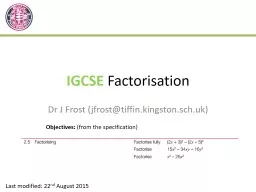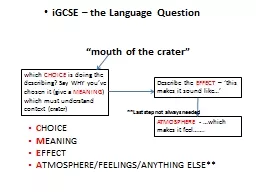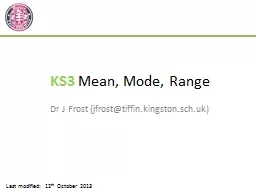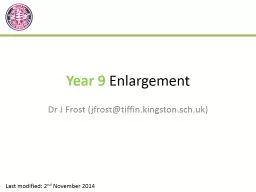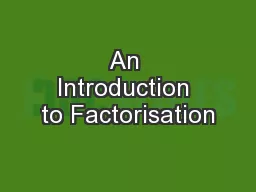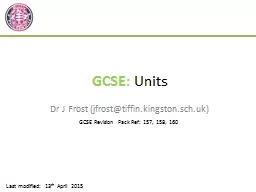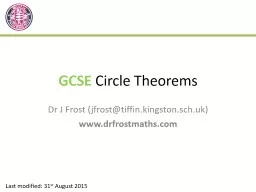PPT-IGCSE Factorisation Dr J Frost (jfrost@tiffin.kingston.sch.uk)
Author : liane-varnes | Published Date : 2018-11-01
Last modified 22 nd August 2015 Objectives from the specification RECAP What makes this topic Further Maths ey 1 Sometimes require multiple factorisation
Presentation Embed Code
Download Presentation
Download Presentation The PPT/PDF document "IGCSE Factorisation Dr J Frost (jfrost@..." is the property of its rightful owner. Permission is granted to download and print the materials on this website for personal, non-commercial use only, and to display it on your personal computer provided you do not modify the materials and that you retain all copyright notices contained in the materials. By downloading content from our website, you accept the terms of this agreement.
IGCSE Factorisation Dr J Frost (jfrost@tiffin.kingston.sch.uk): Transcript
Download Rules Of Document
"IGCSE Factorisation Dr J Frost (jfrost@tiffin.kingston.sch.uk)"The content belongs to its owner. You may download and print it for personal use, without modification, and keep all copyright notices. By downloading, you agree to these terms.
Related Documents

